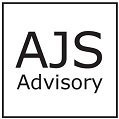Why Should A Business Prepare A Cash Budget?
All too often I come across small businessowners operating without any kind of Cash Budget – some even to the point where their only form of cash management seems to be restricted to a quick look at their bank balance.
Numerous studies point to the strong link between poor cashflow management and business failure. ANZ for example, has reported that no fewer than 82% of business failures are due to poor cashflow even though 69% of businesses are actually profitable when they fail. Whilst Westpac indicates that 68% of businesses don’t actually perform any cashflow analysis.
The message is clear. Ignore the need for a robust cash budgeting system in your business at your peril. So let’s take a closer look at some more reasons why having a cash budget makes sense:
To Monitor Solvency
This is certainty the most important one especially if times are tough – and even more so if you’re a director of a company. As a director, you’ve got a legal obligation to ensure that your company has enough cash or credit facilities available to pay its creditors as they fall due. That’s because s4(1) of the Companies Act 1993 provides that your company is solvent only if it’s able to pay its debts as they fall due, and if the value of its assets exceeds the value of its liabilities (including its contingent liabilities).
To Better Anticipate Times Of Greater Capital Needs
Don’t get caught out by stressful unexpected cashflow surprises. All too often these can come when you have larger, regular payments like GST and Income Tax that fall outside the usual monthly payments cycle. Or alternatively when you have larger irregular items like an unplanned fixed asset purchase, or a delay in collecting a debt due from a large debtor
To Focus On How Components Of Your Cashflow Interrelate
I’m often asked how come the business is showing a good profit, yet the overdraft and other borrowings still remain high.
To answer this type pf question, it’s important that you understand the difference between each of the three types of transactions flowing through your bank account. They are:
(1) Operating Activities – these are the cash transactions arising from using working capital in your day to day trading eg: debtors’ receipts, payments to suppliers, employees and GST.
Notice that this isn’t the same as the profit or loss reported in your Profit and Loss Statement that’s used as the basis for your tax calculations. That Statement records the trading transactions (excluding GST) that have been incurred in each period, as well as non cash items like depreciation.
Therefore, whilst profit is a significant driver of your cashflow, it’s a part only of just one of its three components.
(2) Investing Activities – these include fixed asset purchases or the sale of investments ie: they relate to the long term strategic investments that your business is making.
(3) Financing Activities – these are loans raised and their repayments, whether from your bank or from you as owner. Usually these finance Investing Activities only.
Therefore a mature, profitable business ideally aims for a solid net cash inflow from its Operating Activities to enable it to make further investments in its long term capital assets provided the return warrants it (ie: its Investing Activities), and / or to pay down debt where this is the most profitable way of using spare cash (ie: its Financing Activities).
To Answer Some Searching Questions About Your Business
Key cashflow decisions that often directly affect your profitability include:
- What are the cashflow and profit effects of changing your Terms of Trade for customers?
- Are the margins and volumes being achieved throwing off sufficient cash to settle costs, repay debt and purchase capital assets?
- What are the cashflow and profit effects of leasing versus buying versus retaining old plant?
- Are long term assets being financed by long (not short) term debt?
- What’s a safe level of cash and bank credit facilities to hold to ensure that your business can meet its commitments as they fall due? Generally liquid assets held (ie: cash, debtors due within 30 days) should exceed current liabilities. Furthermore, total assets should ideally be twice current liabilities, although that can vary depending in your industry and how you operate.
- Is the level of your drawings and other debt repayments commensurate with the cashflow surplus of your business?
- Is your business holding more cash than you expect it to deploy profitably?
- Is cashflow being managed overall in a way that reduces interest costs?
Haven’t got a Cash Budget for your business? Then stop. Take more control. Set up a prudent cashflow budgeting system for your business that includes extracting a statement of cashflows at regular intervals from your accounting system to monitor the makeup of your cashflows.
AJS Advisory® provides on call support that includes helping you to establish and monitor a more effective cashflow budgeting system that’s aimed at improving your business results. Contact us now for more information.


